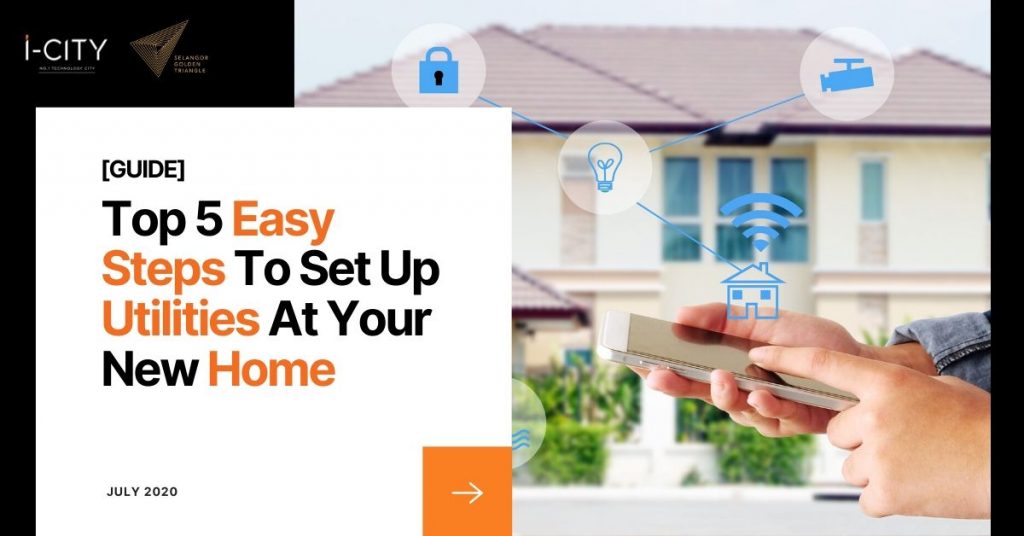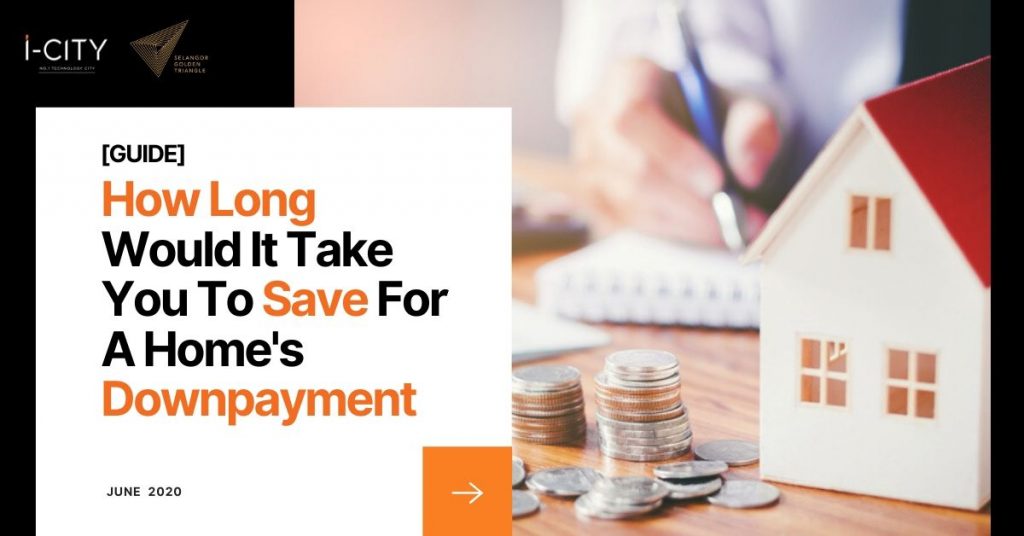If you’re in need of setting up the important utilities like water, electricity, and sewerage at your new home, we’ve got you covered with this comprehensive guide! You’ve just bought a new home, and it’s time to celebrate! Purchasing a property is an amazing life event, and often one which takes a lot of time and energy to complete. Whether you’ve bought a shiny new development property or an exciting subsale home, there are a few extra steps you’ll need to take next.
The most obvious move is buying furniture. If you’re in a subsale property, you might be thinking about a little bit of home decor to make the home your own. That’s a great way to enjoy that warm feeling about a special place for your family. Before it all however, you’re probably wondering about the question of home utilities. Both water and electricity supply are fairly important when it comes to ensuring a property is fit to live in.
Don’t worry, we’ve got your back. Here’s a simple explainer guide on sorting home utility connections for your property.

Connecting Your Home Water Supply

For someone who’s living on their own, they’ll have to worry about a myriad of other costs like rent, food, transportation, phone bill, and savings for an emergency. That’s why banks would always want to check on an individual’s Debt Service Ratio (DSR) before they can be approved for a home loan. This is a formula which will show if you’re able to repay your loan, or if you’ll be barely surviving each month.
Connecting your property to a water supply in Malaysia varies state-by-state, with different companies and processes depending on where you live. So how DO you get water where you are?
While some companies are wired in to the joys of the modern world, and allow you to apply for connections online, others follow a more traditional route of requiring you to be at an office with appropriate ID.
In cases where a water meter is required, you may have to pay a fee for the connection. Don’t worry, if there’s already a meter at your property, you can just transfer it over to your own name. There’s no need to pay for an extra meter!


A 10% downpayment is a considerably large amount of cash and can seem almost impossible to reach for many Malaysians. It’s one of the reasons why people usually take years to save up every single Ringgit they can. If you want to do the same too, here are some tips and advice for you to get started on your home buying journey:
You can check and compare all the latest rates by region on the National Water Services Commission (SPAN) website.
While the processes vary by state, there are a few key documents you will need to apply for water supply in a currently unconnected property:
- Name and address
- Proof of ID
- Certificate of Completion and Compliance/Certificate of Fitness for Occupation
- Copy of land title
- Revenue stamp
- Copy of rental agreement (renting)
Whereas reconnecting an existing water supply will require the following documents:
- Copy of I/C
- Copy of land title, tax assessment, land tax, or tenancy agreement
- Water bill and the account of the old premise (if applicable)
- Revenue Stamp RM10.00
Change Of Ownership For Sewerage Services

It’s not just what comes into your home, but what goes out that you need to think about! Sewerage services are another important part of your home utilities to consider.
The good news is that Indah Water Konsortium (IWK) acts as a centralised organisation for sewerage services through most of Malaysia.
The sewerage systems in Kelantan, Sabah, and Sarawak are operated by local authorities. If you live in a large new development, sewerage connections should be installed as standard.
If however you’ve purchased a subsale property, or built a new home, you may need to take steps to connect your own sewerage to the IWK system. IWK holds responsibility for the public sewerage system.
Owners are responsible for the cost of connecting individual septic systems via private connection pipes to the public infrastructure. This process can include a period of disruption for your sewerage system.
Premises which are connected to the public sewage treatment plant will be billed RM32.00 once every four months, or RM8.00 per month.
If your subsale property is already connected to the IWK system, you will need to apply for a change of ownership.
This will require you to submit photocopies of the first, second, and last two pages from the Sales and Purchase Agreement (SPA), with the names of the purchaser/seller, property address, date of agreement, and signatories of all parties concerned.
Connecting Your Home Power Supply

Powering up your home is the first step towards Netflix and a relaxing night in! And of course lights, power for cooking, and all sorts of other things that aren’t as important as Netflix.
There are three main electricity suppliers in Malaysia: Tenaga Nasional Berhad, Sabah Electricity, and Sarawak energy.

It’s worth recognising that Malaysia’s electricity supply industry is undergoing something of a transformation, and that a competitive retail market is set to open up in coming years.
That means residential consumers will be able to choose and change tariffs between competitive suppliers at some point in the future.
Electricity Connection With TNB
As Malaysia’s largest electricity supplier, there’s a good chance that most readers will be arranging a connection with TNB.

If you’re buying a new development unit such as an apartment or condominium, then in almost all cases, electricity supply infrastructure will already be installed. This comes as part of the required Notice of Vacant Possession.
Connection charges for new-built property as a homeowner more directly refers to a standalone property that has been designed and constructed from scratch. As the complicated connection charges above highlight, the true cost of connection can vary depending on the circumstances. There is also the question of a deposit to consider for new accounts.
The costs for a deposit would depend on the type of property, and expected voltage level of connection.A deposit is based on the assumption of two months of a customer’s electricity usage, and stretches from RM170 for a simple kampung house or flat, through to RM1,600 for a penthouse or multi-storey bungalow. This deposit is refunded once the customer closes their account, assuming all payments are up to date.
Electricity Supply For Tenants
Apart from asking your boss for a raise, you could also consider investing your money, or using your skills/talents for freelancing job opportunities (over the weekend, of course!). You could also generate some side income by taking part in the thriving online community and opening up a small business that allows you to sell homemade goods.
Not everyone owns the home they live in. Don’t worry renters and landlords, there’s a simple process to ensure tenants can access electricity too!
If a landlord wants bills to be issued directly in the tenant’s name, they can apply for a Change of Tenancy to open a new account for a customer moving into an existing property with working electrical installations.
For TNB customers, you can apply online via the myTNB portal, or at the nearest Kedai Tenaga.
1) Connecting power supply in Sabah

If you’re a resident in Sabah, the process for power supply connection isn’t all that different from the one followed in Peninsular Malaysia.
Sabah Energy will require a deposit as part of your connection. The cost depends on the type of house, and expected voltage level of connection.
A deposit is based on the assumption of two months of a customer’s electricity usage, and stretches from RM50 for Rural Electricity Programme (BELB) properties, up to RM1,500 for a multi-storey bungalow.
2) Connecting power supply in Sarawak

If your property is in Sarawak, then you’ll be applying to Sarawak Electricity for your new electricity connection.
Make sure you have a separate savings fund which you can dip into for emergencies, so you don’t need to touch that precious downpayment. In addition, you could also sign up for a health insurance plan that comes with an accident cover, as that will definitely be a life-saver (literally) when it comes to anything medically-related.
Recent policies announced in Sarawak will see free connection charges up to a cost of RM5,000, and 70% subsidies for connection charges between RM5,000 and RM10,000.
You will require the following documents for your application:
- Completed AC01 Application Form
- Photocopy of NRIC
- Registered Sales & Purchase Agreement / Land Title / Tenancy Agreement / Offer Letter or Memorandum of Transfer (wherever applicable)
- Consent letter from partner (if applicable)
- Business registration document (if registered under a company name)
- Company stamp (if registered under a company name)
- You can also submit a new application for electricity supply online here.
Changing the name and transferring an existing electricity supply in Sarawak will be completed using the following process:
- You are required to change the name on the contract as soon as you buy or rent the premises.
- You are also required to settle any outstanding bills.
- For premises that have been vacant for more than one year, you are required to do an internal wiring testing. You may engage any of Sarawak Electricity’s registered internal wiring contractors to administer the testing.
You may approach any of Sarawak Electricity’s customer service counters, or contact the Customer Care Centre, to submit the following required documents:
- Photocopy of NRIC
- Registered Sales & Purchase Agreement / Land Title / Tenancy Agreement / Offer Letter or Memorandum of Transfer (wherever applicable)
- Consent letter from partner (if applicable)
- Business registration document (if registered under a company name)
- Company stamp (if registered under a company name)
Property owners in Sarawak will also have to pay a collateral deposit, much like other areas of Malaysia.
This deposit ranges from RM80 for Rural Electrification Scheme properties through to RM4,800 for a multi-storey detached house.
Credits: PropertyGuru















